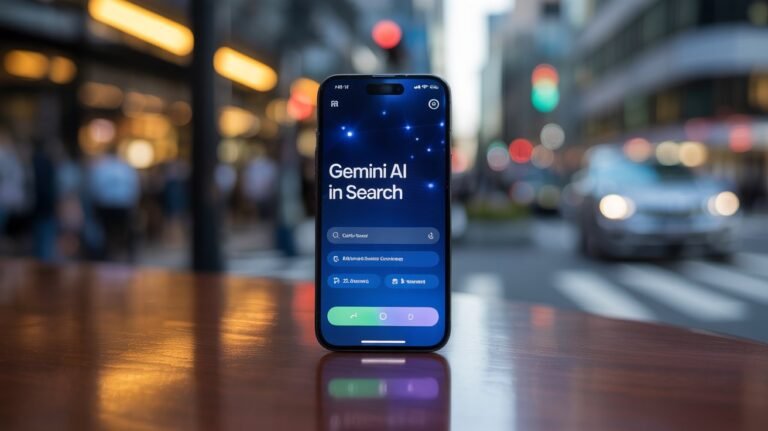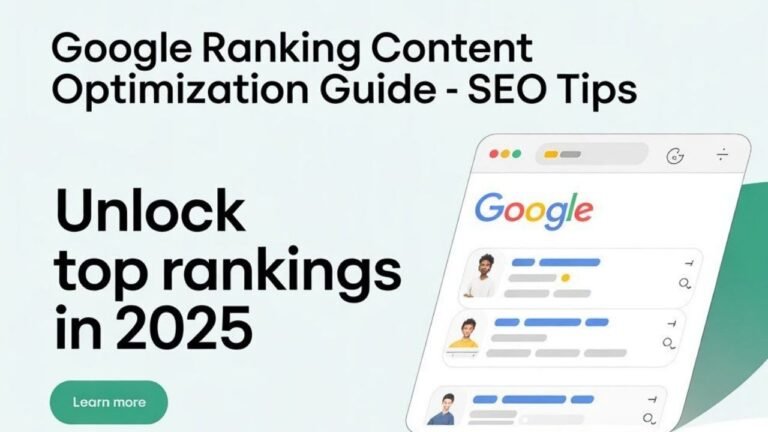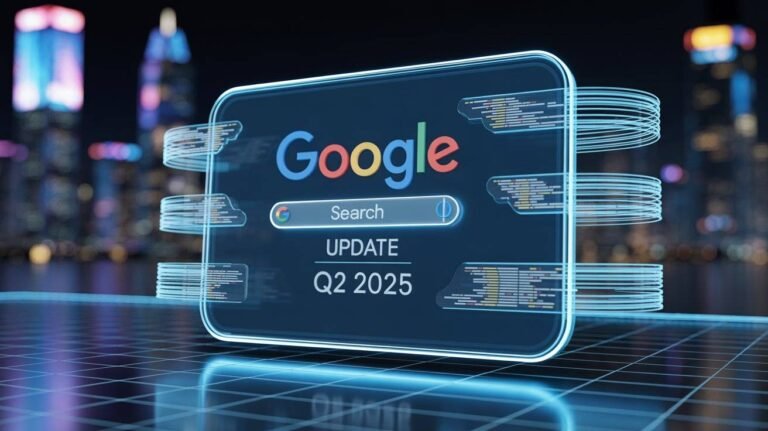How AI Boosts Local, Mobile, and Global SEO in 2025: The Overlooked Ranking Factors
Search engine optimization (SEO) is no longer just about keywords and backlinks. In 2025, if you’re not optimizing for local visibility, mobile users, and international markets, you’re missing major traffic opportunities.
This guide explores how AI-enhanced SEO helps businesses improve their rankings by targeting:
- Where users search (Local SEO)
- How they search (Mobile SEO)
- What language and location they search from (Global SEO)
Let’s break down each one in detail and see how you can level up your strategy.
Local SEO: Appear in “Near Me” Searches
If you’ve ever searched for something like “best café near me” or “electrician in Pune,” that’s local search intent. Google wants to show results that are close to the user, not just relevant.
Why Local SEO Is Essential in 2025
- 46% of all Google searches are looking for local information
- Location-based queries often lead to in-store visits or calls
- Mobile users especially rely on nearby results
Key Local SEO Optimizations
- Add city and region names to your content naturally
- Keep your NAP info (Name, Address, Phone) consistent across platforms
- Create landing pages for each location or service area
- Include FAQs about service coverage (“Do you deliver in Delhi?”)
Local SEO Content Tips
- Blog about local events, news, or community partnerships
- Use testimonials that mention location-specific success stories
- Provide store directions or regional support hours
Mobile SEO: Optimize for On-the-Go Users
With most people now searching on phones, mobile-first indexing is Google’s default. That means your mobile experience affects how you rank.
Why Mobile SEO Drives Results
- Over 65% of all searches happen on smartphones
- A slow, cluttered mobile site drives users away
- Google prioritizes fast, responsive mobile sites in rankings
How to Improve Mobile SEO
- Ensure fast loading times (under 3 seconds is ideal)
- Use responsive layouts that adapt to all screen sizes
- Keep buttons, menus, and forms easy to tap
- Use short sentences, bullets, and subheadings for easy reading
AI’s Role in Mobile SEO
AI helps identify:
- Which pages load slowly
- Where mobile layout breaks
- What content should be trimmed or reorganized for better UX
Global SEO: Reach Multilingual and International Audiences
If your product or content targets different countries, Global SEO helps you match language, region, and search behavior.
This is more than translation—it’s about search intent localization.
Why Global SEO Is Growing
- International search traffic can drive long-term growth
- Users trust websites in their own language and culture
- Regional content outperforms generic translations
Best Practices for Global SEO
- Use correct hreflang tags to specify language/region versions
- Write content in local dialects (not just direct translation)
- Adapt currency, date format, examples, and tone per country
- Avoid phrases that don’t make sense globally (like idioms or slang)
Content Ideas for Global Audiences
- Country-specific landing pages
- Local case studies or testimonials
- Blog comparisons between global trends and local insights
Comparison Table: Local, Mobile, and Global SEO Strategies
| SEO Type | Goal | Optimization Focus |
|---|---|---|
| Local SEO | Show up in regional and “near me” searches | Location pages, address consistency, service area content |
| Mobile SEO | Rank higher on phones and tablets | Fast loads, responsive design, readable mobile content |
| Global SEO | Rank across countries and languages | Language tags, local terms, cultural keyword research |
Frequently Asked Questions
Local SEO targets users in a specific city, region, or neighborhood. Unlike general SEO, it uses local signals like addresses, maps, and location-specific keywords to improve rankings for nearby searches.
Mobile-first indexing means Google looks at the mobile version of your site first. If your site loads slowly or isn’t easy to use on a phone, you lose rankings—even if your desktop version is perfect.
AI helps detect how search terms change across countries, improves translation accuracy, and adjusts content tone to match cultural context—making your global pages more relevant.
No. Even countries that speak the same language (like the US, UK, and Australia) have different search behavior, slang, and formats. You should create localized versions for each.
Ignoring mobile, local, or global SEO leaves major traffic on the table. You’ll lose visibility in local search packs, frustrate mobile users, and miss out on international growth.
Conclusion: AI-Driven SEO Must Include Location, Devices, and Culture
Ranking in 2025 isn’t just about stuffing keywords. It’s about meeting users where they are, on the device they’re using, and in the language they speak.
By applying AI across local, mobile, and global SEO layers, you can:
- Target regional markets more accurately
- Improve user experience on phones
- Expand your reach worldwide
Missing any of these means missed traffic—and missed business.
Start optimizing where it matters most.







